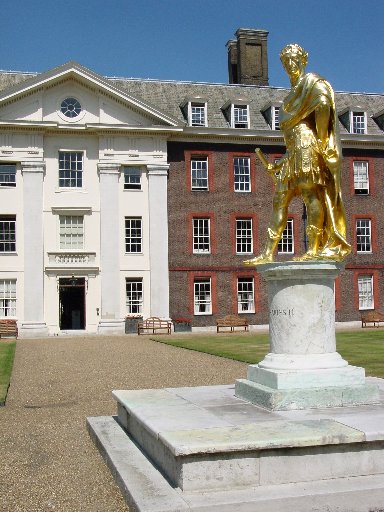
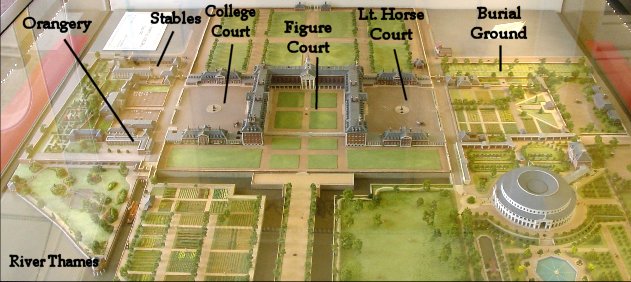
Chelsea - The Royal Hospital
Based on the Invalides in Paris, the Royal Hospital at Chelsea was founded by Charles II for soldiers wounded in battle or retired and unable to support themselves. Formerly the responsibility of local governments, the church, and charitable organizations like the Lord Leycester Hospital in Warwick, the crown now assumed the role of helping its loyal defenders. Perhaps fearing the growth of a standing army, Parliament refused to provide funding, so the project was supported by Charles, other donors, deductions from soldiers' pay, and various other sources. Christopher Wren, the famed builder of St. Paul's and the Greenwich Royal Hospital, designed and built the Royal Hospital at Chelsea beginning 1682 in the then rural area along the Thames west of London. The first pensioners were admitted upon completion in 1692. Although it suffered bomb damage in 1918 and V-2 damage in 1945, the Hospital still serves its original purpose. Conveniently close to the National Army Museum, the hospital is an impressive if under-visited tourist attraction well worth your time for a visit.
 |
 |
| Statue of Charles II, the founder | Model of the hospital in the 1740s |
The Roman inspired statue of Charles II dates to 1692 and was recently re-gilded. At the time, it was unique in that the king was dressed like an ancient Roman general with exposed arms and legs. The Rotunda visible in the model on the right was built in 1742 on land leased from the hospital and was used for public entertainment until 1805, when it was destroyed. Construction of the Chelsea portion of the London Embankment, a road and sewer system dating to the mid 1800s, altered the gardens between the hospital and the river.


Figure Court
Showing the extent of the original design, this photo shows the Figure Court with the statue of Charles II in middle. The hospital's cistern was below the cupola, with the Great Hall to the left of it and the Chapel to the right. The cannon were captured in battle, but the large shells date from a mid 19th century experimental mortar.

View From the North
| The main section of the hospital is prominent here, with a
statue of a pensioner in front of the building. The Chapel and Great Hall
are to either side of the cupola, with the smaller buildings of the Lt. Horse
and College Courts on either end of the photo. These were part of an
expansion soon after main Figure Court section was completed.
|
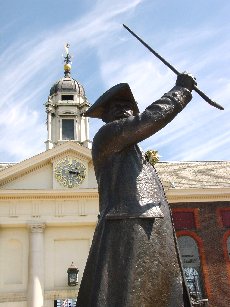 |
 Octagon Porch This is directly under the cupola. |
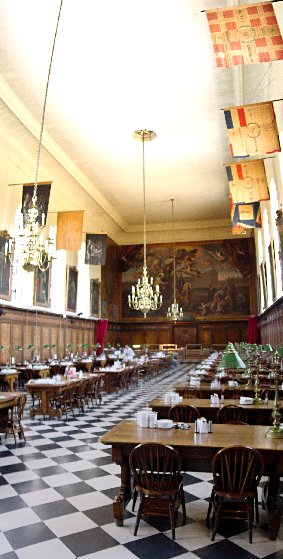 Great Hall Used originally as a dining area, the Great Hall was later used for other purposes but has since returned to its original use. Reconstructions of captured flags, including French and American ones, hang from the walls, and a painting of Charles II in front of hospital covers the far wall. |
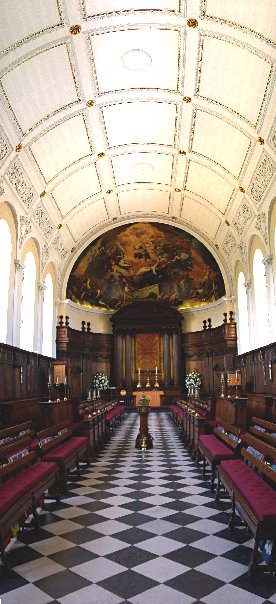 |
 |
Chapel
The chapel includes ornate wood carvings and a painting of the resurrection.